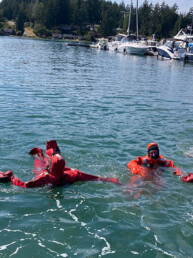Having a reliable internet setup is key to staying connected while on the water, but being able to work from the boat adds some additional challenges. I’ve done it for years, and have found a number of things that help make it easy to do while providing a quality experience.
My requirements
Everyone’s requirements for working remotely are slightly different, and can result in a cheaper/more expensive or simpler/more complicated solution. Here is my particular use case:
Office applications – I use Microsoft Office 365 and Google G Suite for email and documents all the time. Being able to send and receive email quickly, manage my calendar, and work on documents or presentations is very important. I don’t want to have to download things offline or shuffle things to other places.
Chat – I use Slack extensively, along with Microsoft Teams, for chatting, group chats, and file sharing and collaboration.
Video – My primary communication method is Zoom, along with Teams video calls, sometimes some FaceTime calls, and then voice calls on the cell phone.
These things must work as if I were at home connected to a land-based internet connection. That means:
- No video weirdness or loss of video / audio
- Speedy response within Slack/Teams
- Excellent video in Zoom/Teams
- Quality phone calls
- Connected during work hours reliably
My Current Setup
These are the primary things I’ve focused on to make my remote work situation the best possible.
- Modular marine system
- 2 cellular connections + remote WiFi
- Redundancy – SpeedFusion
- Good local WiFi
- Controlling Usage






